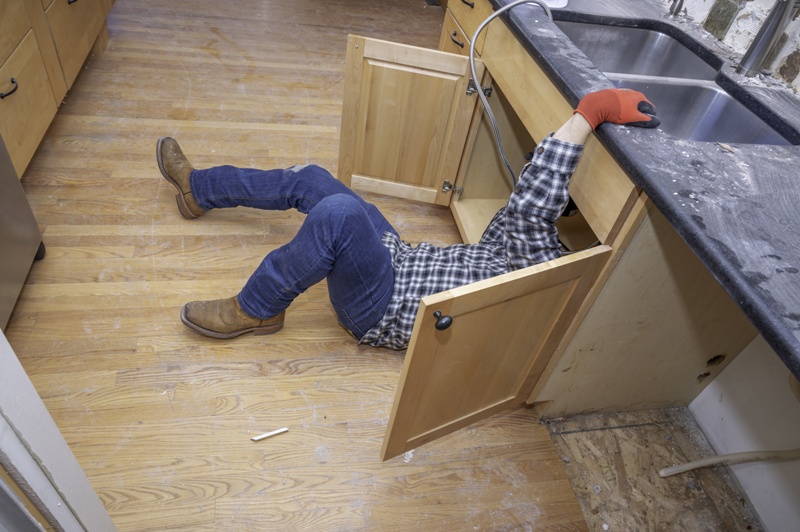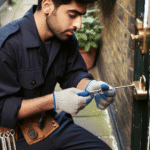Amid the various industries taking a big hit during the COVID-19 pandemic, renovation services are among those that thrived. The Kitchen & Bath Market Index, which measures the demand for kitchen and bath services, reports that the index for the third quarter of 2020 jumped to 61.9 from 44.2 from the previous quarter. An index of 50 and above means the industry’s expanding.
The report points to people making do-it-yourself renovations as the main reason for the uptick, as they prepare their homes to adapt to the new normal. It’s also hopeful about the continued rise in demand for such services in 2021 when most of the world slowly resumes normalcy.
No doubt, now’s a good time to start that kitchen renovation project you’ve been putting on hold for years. Whether you’re doing it yourself or hiring a pro, the first step is to give your plumber a call. This guide will go over why this is a must.
An overdue update
Roughly two out of five homes in the United States were built in 1969 or much earlier. Unless these homes have undergone a recent retrofit, most may still have plumbing that consists of one or a combination of the following:
- Lead – This metal tends to mix with running water, causing all sorts of negative health effects. While lead pipes have been banned since 1986, replacing them has been slow.
- Galvanized steel – The zinc coating in these pipes protects them from rusting, but it’ll eventually be stripped bare. These pipes are common in homes built in the 1960s.
- Polybutylene – Typical of plumbing between 1975 and 1996, these pipes degrade upon contact with chlorine-treated water from treatment plants.
Naturally, the kitchen has a network of pipes running in the walls and underneath. Having a reputable plumbing service inspect the existing plumbing first helps paint a clearer picture of your plumbing modernization project.
Planning around plumbing

Imagine installing a brand-spanking-new sink in a better spot than the old one. Then you realized that the necessary pipes couldn’t run through the adjacent area because gas lines and wires were in the way. While not entirely dangerous, there’s a reason why plumbers don’t recommend running pipes and wires in the same hole.
For instance, chlorinated polyvinyl chloride (CPVC) is one of the most widely used materials for plumbing in today’s homes. It’s flexible enough to be installed in tight spaces and well protected against corrosion. But it has a melting point of up to 200 °F. Of course, no electrical line should get this hot, but when they do, it can melt or warp part of the CPVC plumbing and spring a leak.
Commercial construction warrants plumbing and electrical lines to be at least 12 inches apart. Residential construction generally doesn’t have such a requirement, but it doesn’t mean there shouldn’t be any.
In this case, have a plumber help you familiarize your kitchen’s plumbing layout. If there’ll be any changes, consult the plumber to determine the best way to perform them. In fact, this step should come before picking cabinetry, countertops, and other kitchen implements.
Local regulations
The National Uniform Plumbing Code governs the standards required of every residential and commercial plumbing in the country. But not everyone’s expected to read all 500 pages of it, let alone remember the dos and don’ts in plumbing. For brevity’s sake, here are several examples:
- Fixtures shouldn’t be placed too close to one another.
- Copper pipes can be used for supplying water, while PVC ones for draining wastewater.
- Install a booster pump or pressure-reducing valve, depending on overall water pressure.
- Drain lines should be sloped at least 1/4 inch for every linear foot.
Depending on where you live, you’ll also have to consider local plumbing codes (which are usually stricter). Your neighborhood plumber is obligated to learn both national and local regulations and even inform you about the necessary paperwork before starting renovation work.
How much?
At this point, you’re probably convinced to get a plumber. The next question is, how much one will cost. Assuming 56% of the cost will go to materials and 44% to labor, kitchen renovation plumbing can start from USD$2,000. It doesn’t come cheap, but making common mistakes in DIY plumbing won’t help save you more money.
Apart from planning, the common tasks for such a project include rerouting, installing shutoffs, and replacing old plumbing.
Conclusion
Without proper planning and preparation, any remodeling project will be a headache—kitchens included. The implications to plumbing outlined here are more than enough to get yourself a plumber and their expertise.






